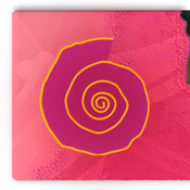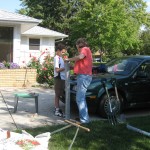I recently spent some quality time in the health care system. The system came through. Each player being paid did the respective task as promised: the surgeon, the anesthetists, the nurses and aides, the physical therapists, even the guided meditation person who spoke with me just before surgery. No complaints about the insurance company either, though the deductible is insanely high. I did my part by preparing for the process as directed and following instructions afterwards.
The ‘Q’ factor, a variable over which I thought I had least control, turned out to be the care from my friends and family. In theory, it seems obvious, but in fact, I am a rather independent soul who is sometimes under the impression that she is doing many things herself. The implications of needing help with daily life for a while, personal needs, meals, rides to the doctor, left me more than concerned. I just didn’t see how I would manage.
Just when I was resigned to going to a rehab facility for two weeks, my aunt who lives in Washington State offered to come for the surgery and ten days after. I’ve always enjoyed Karen’s company, but it didn’t even occur to me to ask her to come to help me. I was very moved by her offer and accepted.
Then, Kate, an acquaintance, also single and independent, told me about carecalendar.org. She had been kicked in the knee by a horse and had an immediate crisis that included feeding a stable full of horses while she recuperated. Someone told her about CareCalendar and both she and her horses were cared for well during her recuperation.
CareCalendar is an online service where one can enter ones needs over any period of time. The Bortel family in Stockdale, Texas created and maintains the service. There is no charge, but they ask for donations. After the requests are entered, there’s a code to send to everyone who has offered to help. Each of those people can go into the site and see if the requests fit with their schedules.
CareCalendar, coupled with my aunt’s generosity, made all the difference. I needed about a month’s worth of steady attention. In just a few days, I had promises of a five week’s of meals, rides to the doctor, and, even a crew of friends and their kids to do fall-cleanup in the yard. My aunt loved the results of CareCalendar, too, as she didn’t need to cook much, though she did make a fabulous apple pie.
I received wonderful dinners, including African Peanut Soup, a divine Chicken and Rice Casserole, several bottles of wine (saved until I was off the pain meds), bouquets of flowers, and even Seasons 1 and 2 of Mad Men. Some of the friends and neighbors who helped were the usual suspects, friends I see often enough. I was very grateful knowing I could rely on them, though I wasn’t surprised at their attention. I sent CareCalendar and the sign-in codes to every person who offered to help, some of whom I didn’t know that well or expect do anything. But, they offered and I honored that.
Perhaps I shouldn’t be so surprised. But, I was. And, humbled too. A recent study reported in the New York Times details how children practice giving and helping even before they can talk. The researchers say that we are programmed with the urge to help. It’s biological, they say.
Apart from my appreciation for my friends and family and CareCalendar, one other thing is worth noting. A handful of the people who helped me have started using CareCalendar, including the church’s ‘Hot Dish Ministry’ and individuals coordinating for friends and family.
Biological? It works. That’s all I need to know!




